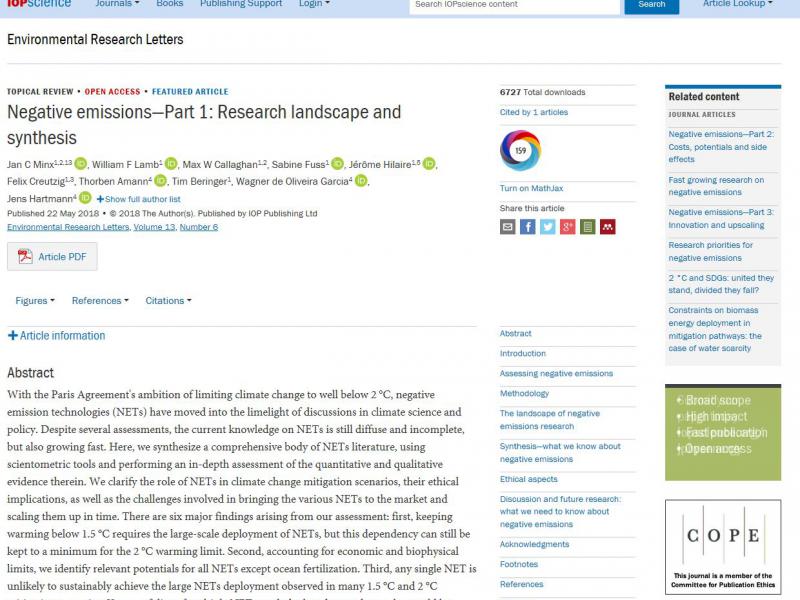
With the Paris Agreement's ambition of limiting climate change to well below 2 °C, negative emission technologies (NETs) have moved into the limelight of discussions in climate science and policy. Despite several assessments, the current knowledge on NETs is still diffuse and incomplete, but also growing fast. Here, we synthesize a comprehensive body of NETs literature, using scientometric tools and performing an in-depth assessment of the quantitative and qualitative evidence therein. We clarify the role of NETs in climate change mitigation scenarios, their ethical implications, as well as the challenges involved in bringing the various NETs to the market and scaling them up in time.
There are six major findings arising from our assessment:
- First, keeping warming below 1.5 °C requires the large-scale deployment of NETs, but this dependency can still be kept to a minimum for the 2 °C warming limit.
- Second, accounting for economic and biophysical limits, we identify relevant potentials for all NETs except ocean fertilization.
- Third, any single NET is unlikely to sustainably achieve the large NETs deployment observed in many 1.5 °C and 2 °C mitigation scenarios. Yet, portfolios of multiple NETs, each deployed at modest scales, could be invaluable for reaching the climate goals.
- Fourth, a substantial gap exists between the upscaling and rapid diffusion of NETs implied in scenarios and progress in actual innovation and deployment. If NETs are required at the scales currently discussed, the resulting urgency of implementation is currently neither reflected in science nor policy.
- Fifth, NETs face severe barriers to implementation and are only weakly incentivized so far.
- Finally, we identify distinct ethical discourses relevant for NETs, but highlight the need to root them firmly in the available evidence in order to render such discussions relevant in practice.
Jan C Minx et al 2018 Environ. Res. Lett. 13 063001






